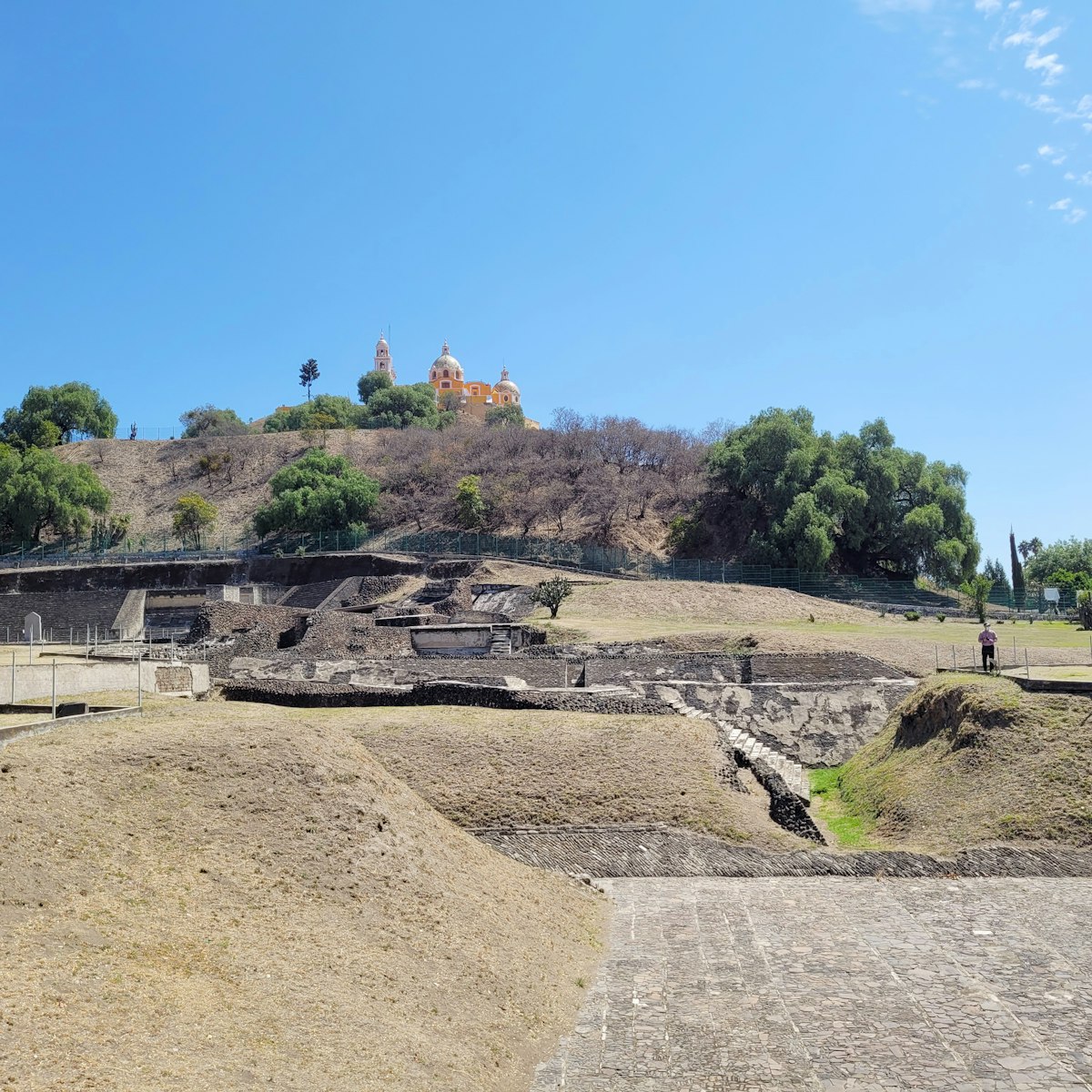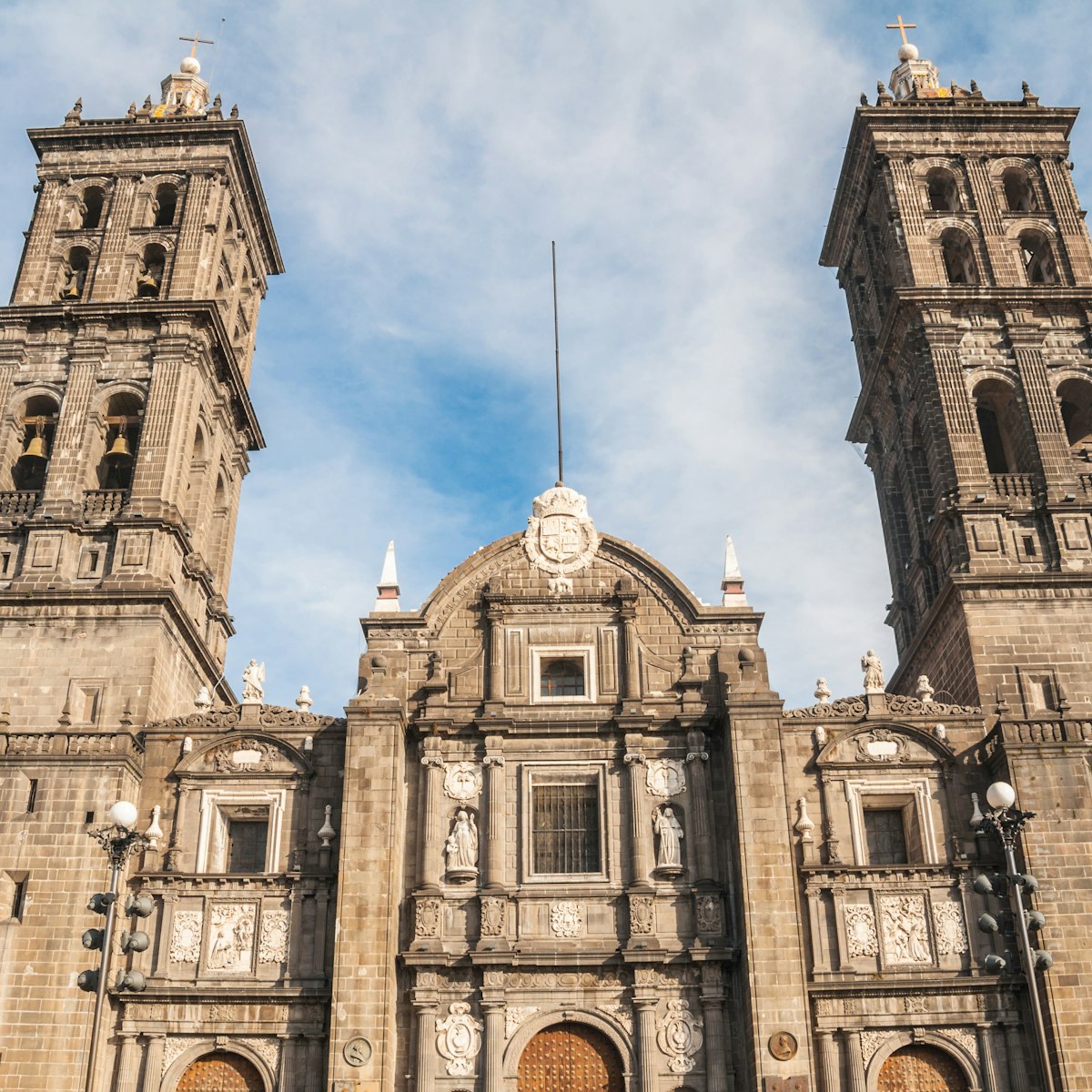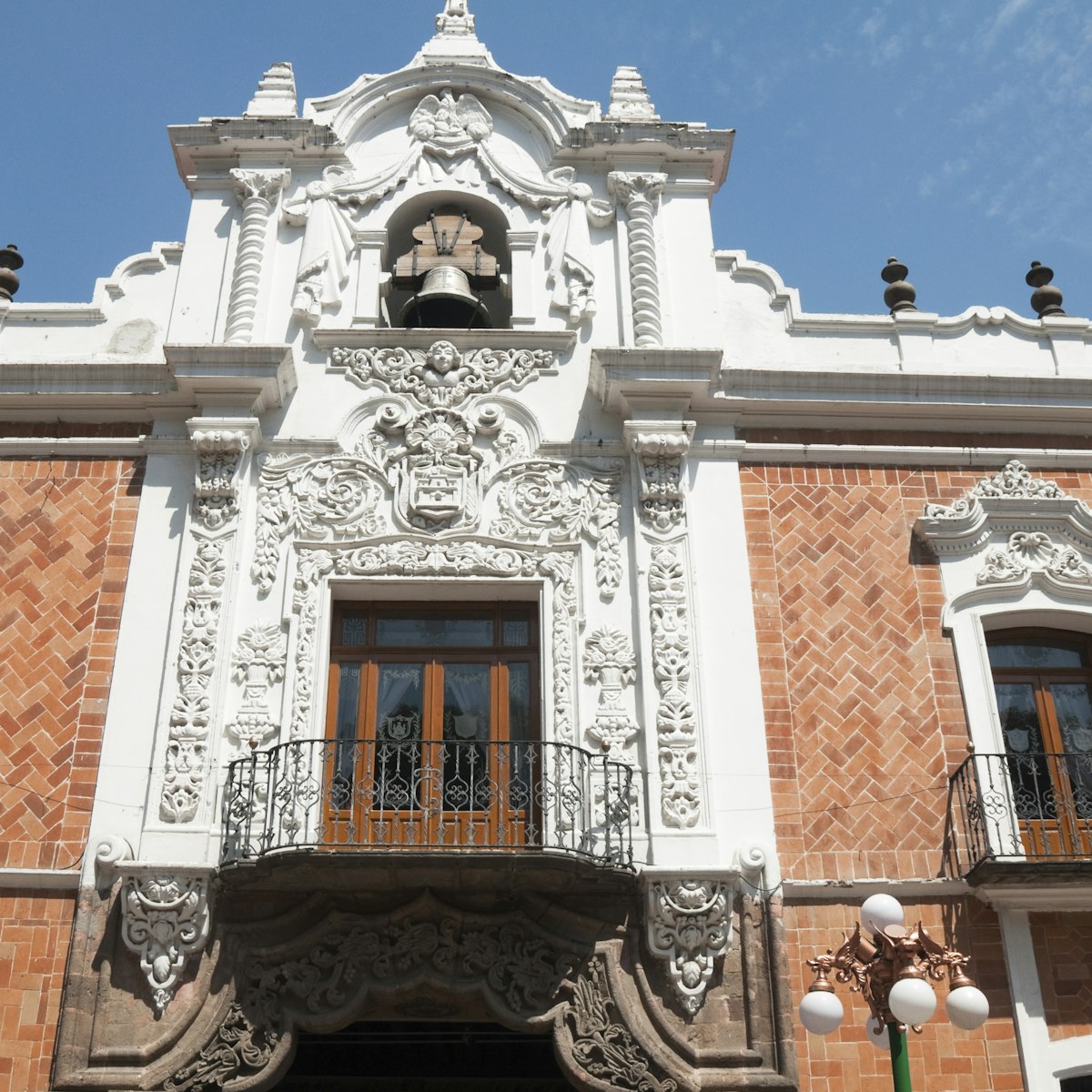About 2km from Cacaxtla, the much older ruins at Xochitécatl include a wide pyramid dedicated to a fertility god, and a circular pyramid. Because of its outline and the materials used, archaeologists believe the circular Pirámide de la Espiral was built between 1000 and 800 BCE. Its form and hilltop location suggest it may have been used as an astronomical observation post, or as a temple to Ehécatl, the wind god. From here the path passes three other pyramids.
The Basamento de los Volcanes, which is all that remains of the first pyramid, is the base of the Pirámide de los Volcanes and it’s made of materials from two periods. Cut square stones were placed over the original stones, visible in some areas, and then stuccoed over. In an interesting twist, the colored stones used to build Tlaxcala’s municipal palace appear to have come from this site.
The Pirámide de la Serpiente gets its name from a large piece of carved stone with a snake head at one end. Its most impressive feature is the huge pot found at its center, carved from a single boulder, which was hauled from another region. Researchers surmise it was used to hold water.
Experts speculate that rituals honoring the fertility god were held at the Pirámide de las Flores, due to the discovery of several sculptures and the remains of 30 sacrificed infants. Near the pyramid’s base – Latin America’s fourth-widest – is a pool carved from a massive rock, where the infants were believed to have been washed before being killed.



